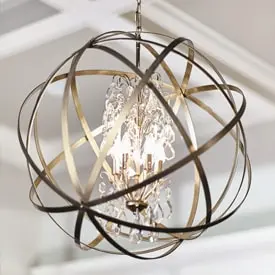In my last blog post, I spoke a bit about daylight LEDs which are a 5000 Kelvin. This color temperature is a very blue/white light that is not normally recommended for a residential space. It creates a very operating room-like quality of light.
There are many benefits of LEDs. Lighting accounts for about 10% of energy use in the average home. While LEDs (Light Emitting Diodes) can initially cost more than the old incandescent, installing LEDs is an easy and efficient way to save on your electric bill and they last much, much longer and use up to 80% less energy.
Soft warm light 2700K-3000K is perfect for indoor use while bright, cool light 3500K-4000K works well for outdoor and task lighting. LEDs are very durable, and most are dimmable. They do not contain mercury like fluorescents or radiate heat as do halogen bulbs and are less temperature sensitive. When shopping for LEDs, be sure to look at lumens not watts. Watts measure the amount of electricity a bulb consumes; lumens measure the amount of light a bulb emits. 
I believe most of us have embraced LEDs and changed out all our incandescent for the LEDs. I must admit it was a hard pill to swallow when LEDs were first introduced but the benefits out weigh the old incandescent. Our under-cabinet lights, path lighting and many of our fixtures are offered with the LED modules so no bulbs are required. Many of our customers continue to have questions regarding LEDs and when we explain, they usually exit with a bag full.







